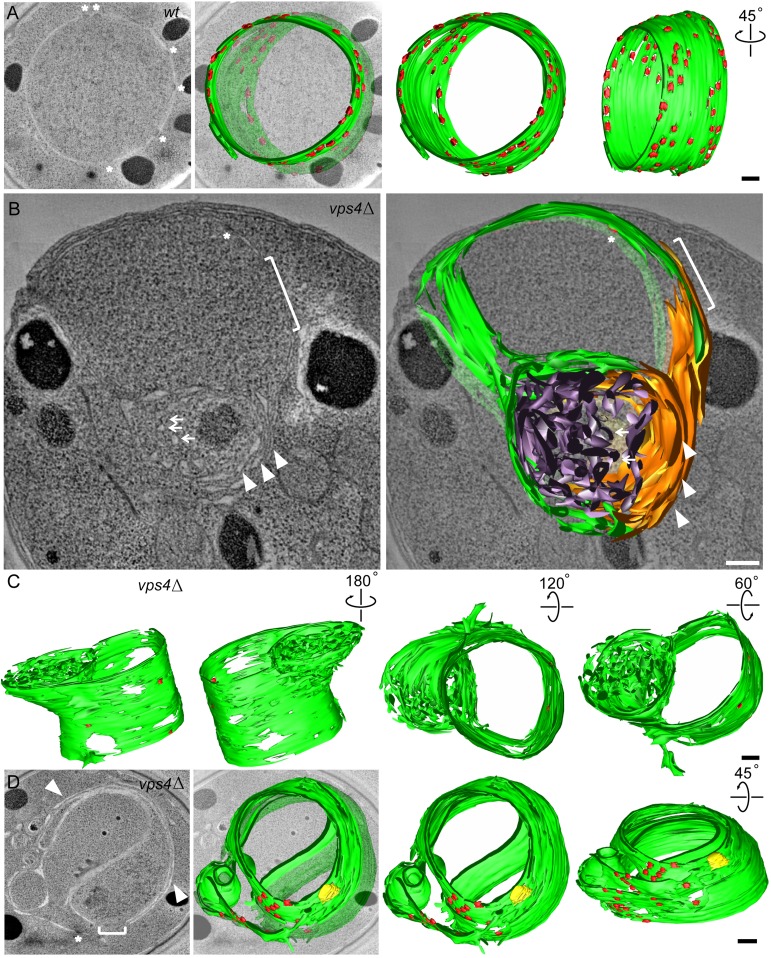Fig. 4.
vps4Δ NEs have persistent fenestrations, karmellae, and disorganized tubular extensions. (A, Left) Single tomographic slice showing the WT NE. NPCs are marked by asterisks. Segmented NE (green) with NPCs (red) reconstructed from 150 tomographic slices is shown in a merged view (A, Left Center), a front view (A, Right Center), and a side view (A, Right). (B, Left) Single tomographic slice showing the vps4Δ NE. The following features and defects are highlighted: a fenestration (bracket), an NPC (asterisk), karmellae layers (white arrowheads), and a disorganized whorl of tubules (arrows). (B, Right) Segmented model of NE reconstructed from 100 tomographic slices is shown in a merged view with karmellae in gold and a whorl of tubules in purple. (C) A segmented model of vps4Δ NE reconstructed from 200 tomographic slices is shown from the front (Left), back (Left Center), top (Right Center), and bottom (Right). (D, Left) Single vps4Δ tomographic slice showing NPCs are absent from karmellae region. The following features and defects are highlighted: a fenestration (bracket), an NPC (asterisk), and karmellae layers (white arrowheads). Segmented NE (green) with NPCs (red) and SPB (yellow) reconstructed from 150 tomographic slices shown in a merged view (D, Left Center), a front view (D, Right Center), and a side view (D, Right). (Scale bars: 200 nm.)

